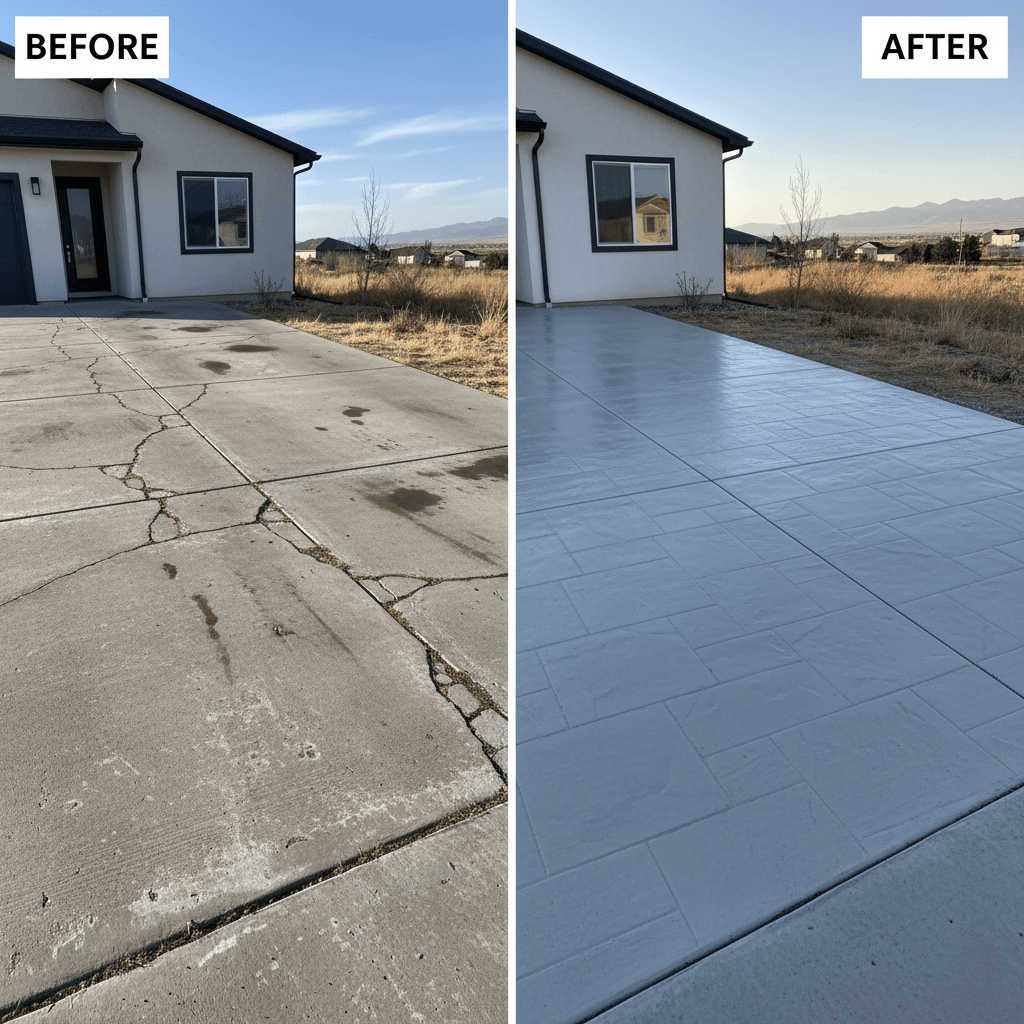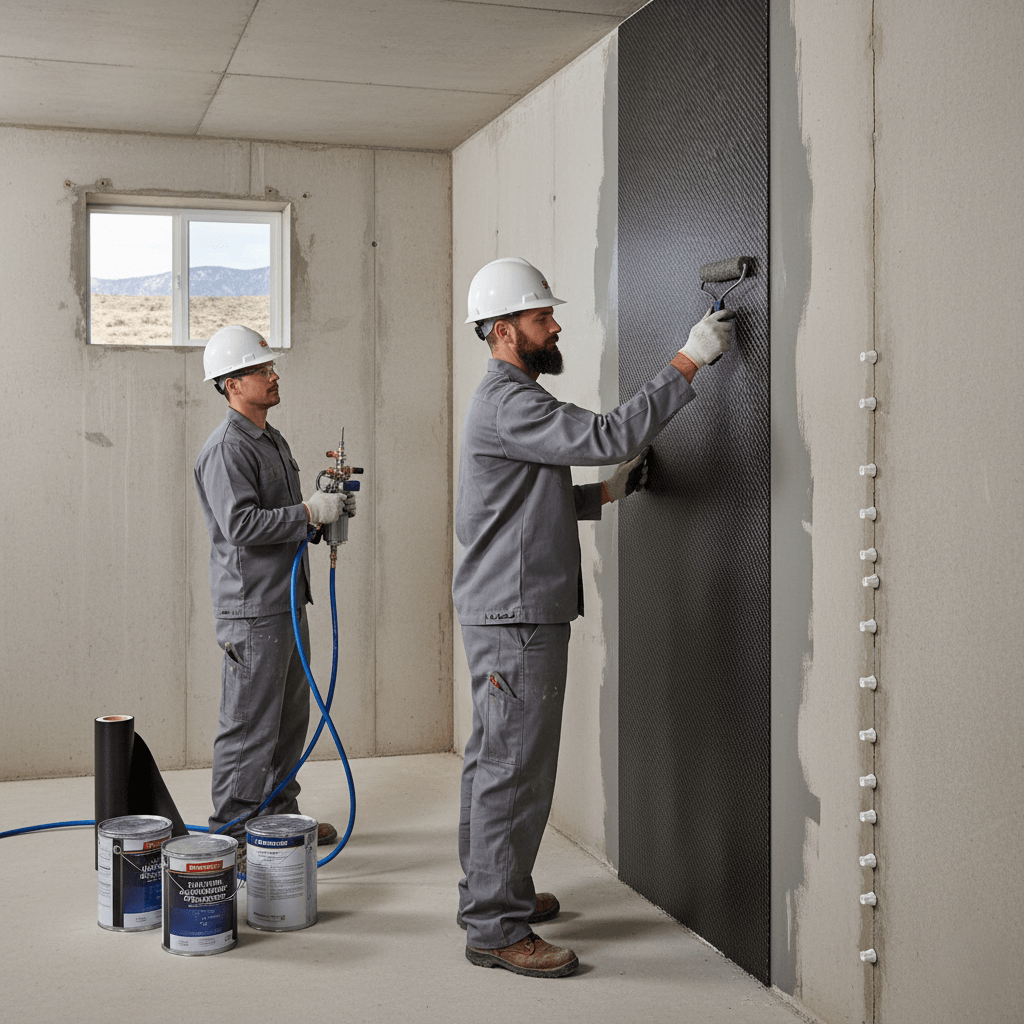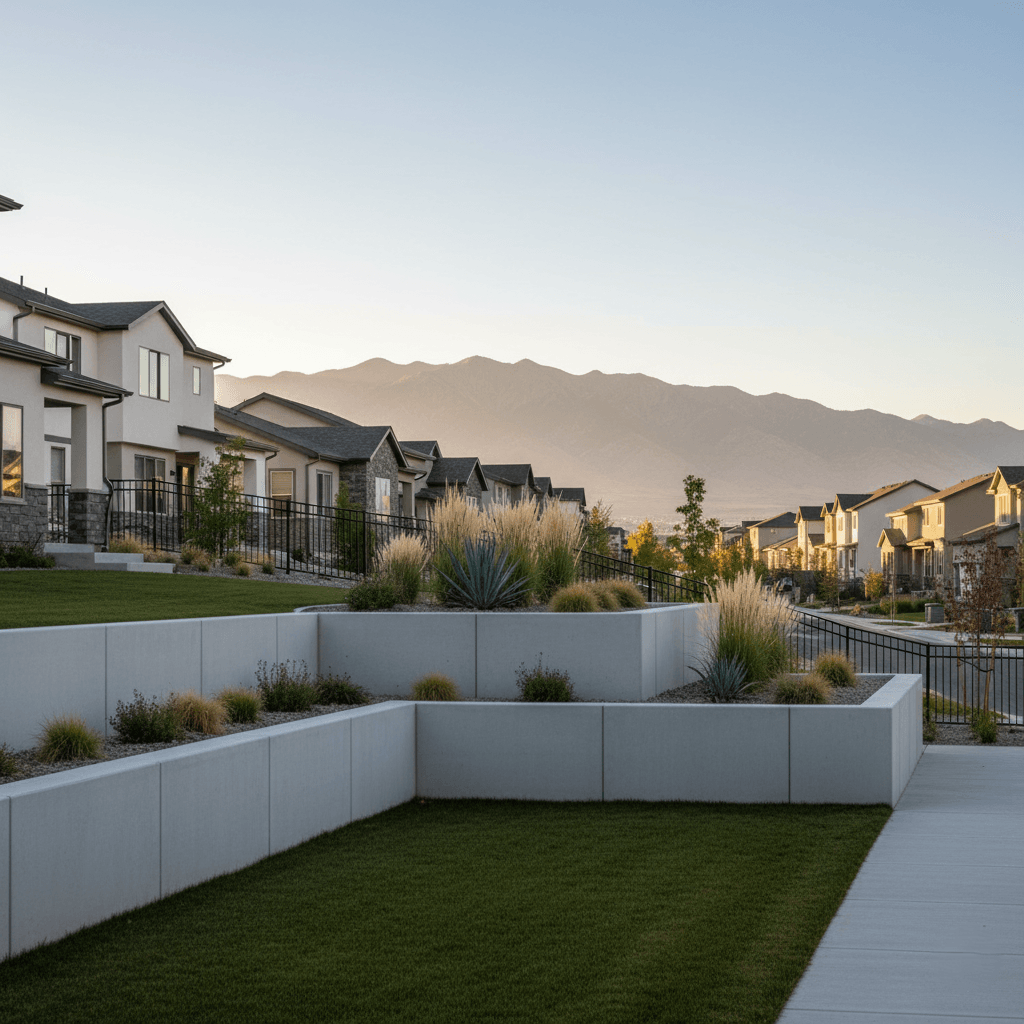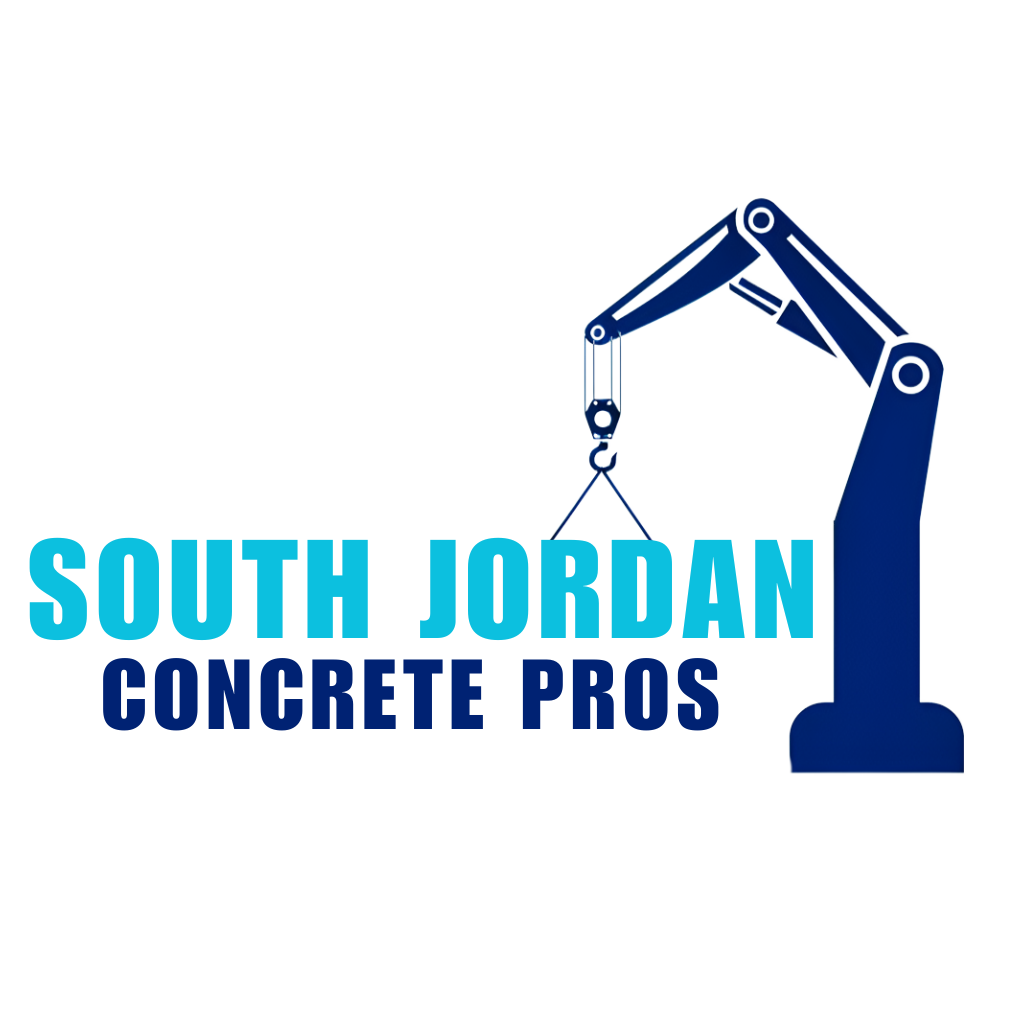South Jordan Concrete Pros - Frequently Asked Questions
If Your Question Is Not Answered Here Drop Us A Line
What are typical concrete driveway installation costs per square foot in South Jordan?
South Jordan concrete driveway installation ranges $8-$14 per square foot, professionally installed. Basic 4-inch reinforced driveways cost $8-10 per square foot, while premium 6-inch installations with decorative finishes reach $12-14 per square foot. Utah’s high altitude affects curing rates and may require mix adjustments. Local competition from Salt Lake area suppliers helps moderate pricing, though mountain delivery distances can add $2-4 per square foot for more remote South Jordan locations.
What's the cost difference between replacing and resurfacing driveways in South Jordan?
Complete replacement in South Jordan costs $10-17 per square foot compared to $5-9 per square foot for concrete resurfacing. Replacement includes demolition, excavation to stable soil (important in Utah’s expansive clay areas), proper base installation, and new concrete meeting Utah building standards. Resurfacing applies a 2-3 inch overlay over sound concrete. Utah’s dry climate and temperature extremes favor replacement for long-term performance, despite higher upfront investment.
How do stamped concrete patio costs compare to standard finishes in South Jordan?
Plain broom-finish patios in South Jordan cost $9-13 per square foot, while stamped concrete patios ranges $15-22 per square foot. The premium reflects specialized installation, color additives, and pattern tools. Popular South Jordan patterns include slate and sandstone textures that complement Utah’s natural landscape. Both require proper curing in Utah’s dry climate, with stamped surfaces needing regular sealing to maintain color and protect against UV exposure common at Utah’s 4,300-foot elevation.
What factors affect concrete yard pricing in South Jordan, including delivery and pumping?
South Jordan ready-mix concrete costs $110-150 per cubic yard, with short-load premiums ($25-35 per yard for loads under 6 yards), pump truck charges ($300-500 per job), and delivery fees beyond 20 miles ($5-7 per mile from Salt Lake plants). Utah’s dry climate may require retarders ($8-15 per yard) and additional water reducers ($5-10 per yard). High-altitude adjustments for reduced air pressure can affect mix designs and pricing for South Jordan’s 4,300-foot elevation.
What thickness works best for South Jordan driveways - 4", 5", or 6"?
Five-inch thickness provides optimal balance for South Jordan driveways, handling Utah’s temperature extremes and potential seismic movement. Four-inch meets minimum code but may crack under expansive clay soil movement. Six-inch thickness suits heavy vehicles but increases costs substantially. Most South Jordan contractors recommend a 5-inch with thickened edges and proper reinforcement as ideal for residential applications facing Utah’s challenging soil and climate conditions.
What slope specifications ensure proper drainage for South Jordan concrete?
South Jordan driveways require a minimum 1/4 inch per foot slope (2%) for adequate drainage, though Utah’s dry climate tolerates flatter slopes than humid regions. Patios need a minimum of 1/8 inch per foot away from structures to handle occasional intense rainfall and snow melt. A maximum 10% slope prevents finishing difficulties in Utah’s dry air. Proper drainage remains important despite low precipitation due to clay soil expansion when saturated.
When are concrete overlays appropriate over existing surfaces in South Jordan?
Overlays work well in South Jordan when existing concrete remains structurally sound with minimal cracking. Utah’s stable soils and dry climate favor overlay success when properly installed. Clean surfaces thoroughly, etch with acid, and use bonding agents rated for Utah’s temperature ranges. Minimum 2-inch overlay thickness recommended, with 3 inches providing better durability. Overlays suit South Jordan’s renovation market better than complete replacement when the underlying concrete remains stable.
What temperature conditions are unsuitable for concrete placement in South Jordan?
South Jordan concrete pours should avoid temperatures below 35°F or above 95°F. Utah’s high elevation and dry air create rapid moisture loss, requiring hot-weather precautions, including chilled mixing water, retarders, and windbreaks during placement. Cold weather protection is needed from November through February, using heated materials and insulated curing. Optimal placement temperatures of 60-80°F ensure proper hydration in Utah’s low-humidity environment.
What's the concrete curing schedule in South Jordan for pedestrian and vehicle traffic?
Under typical South Jordan conditions, concrete supports foot traffic after 18-36 hours and vehicles after 5-10 days. Utah’s dry climate accelerates surface curing but can cause rapid moisture loss, affecting strength development. Extended moist curing (7-14 days) is critical for achieving design strength in low humidity. Winter conditions may extend the vehicle loading timeline to 12-18 days. Curing compounds or plastic sheeting help retain moisture in Utah’s arid environment.
When should concrete be sealed in South Jordan, and which sealer type performs best?
Seal new South Jordan concrete 60-120 days after placement, allowing thorough curing and carbonation in Utah’s dry climate. Penetrating silicone sealers provide excellent UV protection and weather resistance for high-altitude exposure. Film-forming acrylics work well in Utah’s low precipitation environment but require more frequent reapplication. Apply sealers during mild weather (60-85°F) with low wind. Reapply every 4-6 years, or more frequently for surfaces receiving heavy use.
What represents normal versus problematic cracking in South Jordan concrete?
Hairline shrinkage cracks under 1/16 inch are normal in South Jordan due to Utah’s dry climate and temperature variations. Cracks exceeding 1/8 inch, showing vertical offset, or allowing water penetration, need professional evaluation. Structural issues may result from expansive clay soil movement, inadequate reinforcement, or poor curing practices. Utah’s seismic potential makes crack monitoring important. Map extensive cracking patterns that might indicate soil or structural problems requiring engineering assessment.
Are permits and HOA approvals required for South Jordan concrete work?
South Jordan requires building permits for most concrete work, including driveways, major patios, and structural elements. Contact the South Jordan Building Department at (801) 254-3742 for specific requirements. Permit fees range $100-$300 based on project scope. Most South Jordan neighborhoods have strict HOA design standards affecting concrete color, texture, and placement. Obtain architectural review approval before beginning work, as HOA violations can require expensive modifications to achieve compliance.
What Utah and South Jordan codes govern concrete thickness, slope, and reinforcement?
South Jordan enforces Utah Building Code requirements with local amendments. Residential driveways need a minimum 4-inch thickness with proper reinforcement and 2% minimum slope for drainage. Footings must extend below Utah’s 30-inch frost line. Air entrainment requirements are reduced compared to humid climates, but still recommended. Commercial work requires engineering design. All concrete must meet ACI 318 standards as adopted by Utah. Contact the South Jordan Building Department for local interpretations.
What inspection requirements apply to South Jordan concrete projects?
South Jordan requires inspections for permitted concrete, including footing inspection before placement, reinforcement and form inspection, and final inspection after completion. Schedule inspections 24-48 hours in advance through the South Jordan Building Department. Inspectors verify Utah code compliance, including thickness, reinforcement placement, slope requirements, and mix design approval. Work cannot advance without inspection approval. Failed inspections require corrections and re-inspection scheduling with associated fees.
What should I ask concrete contractors in South Jordan about credentials and warranties?
Verify South Jordan concrete contractors maintain Utah contractor licenses, liability insurance ($1-2 million minimum), and workers’ compensation coverage. Request 5-7 recent local references with contact details and project photographs. Warranties should cover workmanship for 2-4 years and structural defects for 3-7 years. Obtain detailed written estimates specifying Utah-compliant mix designs, reinforcement details, thickness, and finishing specifications. Confirm knowledge of Utah Building Code, South Jordan permit processes, and proper installation techniques for local soil conditions.



